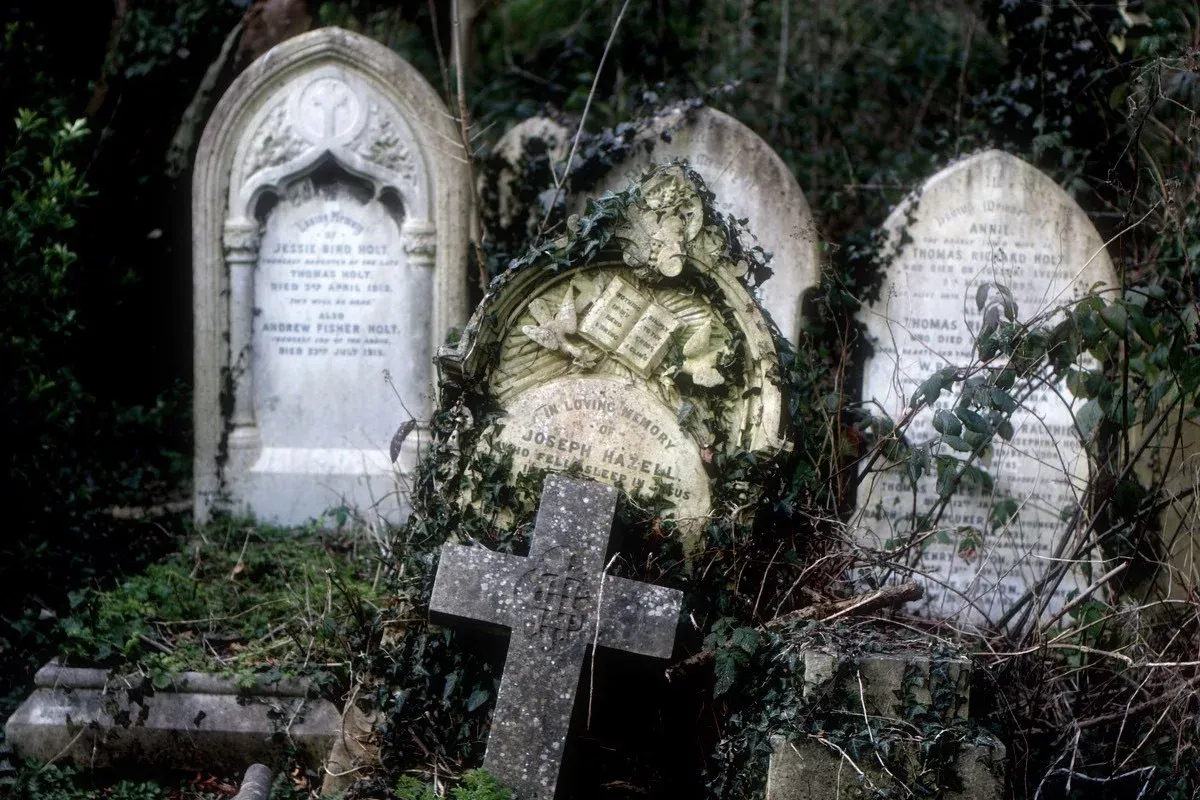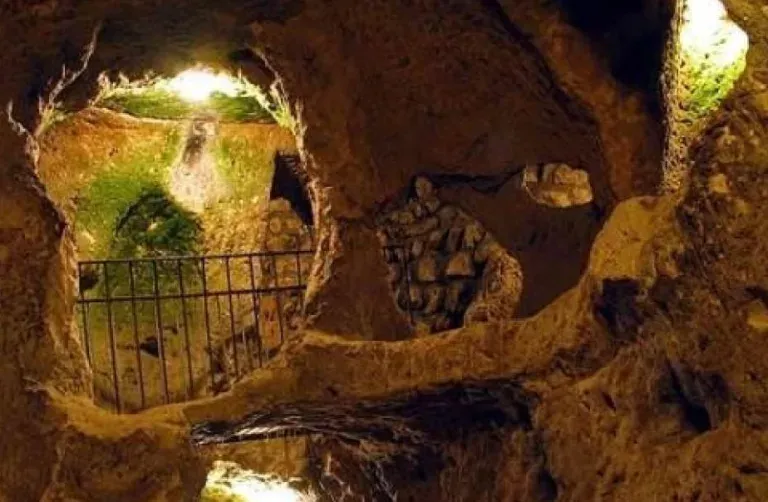The Magnificent 7: London’s Monumental Cemeteries
The Magnificent 7: London’s Monumental Cemeteries
London, a city rich in history and culture, is not only a place of vibrant metropolitan life but also home to some of the most fascinating cemeteries in the world. The Magnificent 7 are a group of seven historic cemeteries built in the 19th century to address the crisis of overcrowded church graveyards in London. These cemeteries are not just places of eternal rest but open-air museums where art, architecture, and nature blend, offering a unique glimpse into London’s social and cultural history.
1. Kensal Green Cemetery
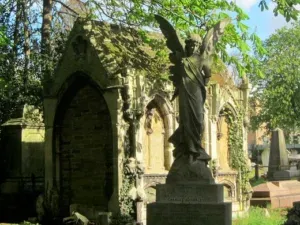 Inaugurated in 1833, Kensal Green Cemetery is the oldest of the Magnificent 7. Located in West London, it is inspired by French cemeteries like Père Lachaise in Paris. Kensal Green spans about 29 hectares and hosts an eclectic mix of Victorian monuments, neoclassical chapels, and elaborate graves. It is known for being the burial place of many notable figures, including the writer William Makepeace Thackeray and the painter J.M.W. Turner. The cemetery is also famous for its majestic entrance colonnade and the Anglican Chapel, both extraordinary examples of neoclassical architecture.
Inaugurated in 1833, Kensal Green Cemetery is the oldest of the Magnificent 7. Located in West London, it is inspired by French cemeteries like Père Lachaise in Paris. Kensal Green spans about 29 hectares and hosts an eclectic mix of Victorian monuments, neoclassical chapels, and elaborate graves. It is known for being the burial place of many notable figures, including the writer William Makepeace Thackeray and the painter J.M.W. Turner. The cemetery is also famous for its majestic entrance colonnade and the Anglican Chapel, both extraordinary examples of neoclassical architecture.
2. West Norwood Cemetery
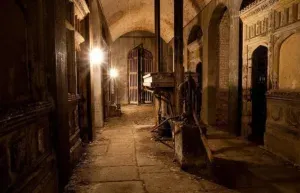 West Norwood Cemetery, opened in 1837, is another gem of the series. Also known as the “Cemetery of the Dissenters” for its large non-Anglican population, it was one of the first cemeteries in the world to have a crematorium, built in 1915. The cemetery is famous for its catacombs, which can be visited on guided tours, and for its numerous Gothic mausoleums and Victorian monuments. Among its most famous burials are the inventor Sir Henry Bessemer and philanthropist Henry Tate, founder of the Tate Gallery.
West Norwood Cemetery, opened in 1837, is another gem of the series. Also known as the “Cemetery of the Dissenters” for its large non-Anglican population, it was one of the first cemeteries in the world to have a crematorium, built in 1915. The cemetery is famous for its catacombs, which can be visited on guided tours, and for its numerous Gothic mausoleums and Victorian monuments. Among its most famous burials are the inventor Sir Henry Bessemer and philanthropist Henry Tate, founder of the Tate Gallery.
3. Highgate Cemetery
 Highgate Cemetery, opened in 1839, is perhaps the most famous of the Magnificent 7, known for its Gothic atmosphere and winding paths through ancient woods. Divided into two sections, Highgate East and Highgate West, the cemetery is famous for the tomb of Karl Marx, which attracts visitors from around the world. Highgate is also known for its spectacular Victorian mausoleums, including the Egyptian Avenue and the Circle of Lebanon, a series of catacombs arranged in a circle around an ancient cedar of Lebanon.
Highgate Cemetery, opened in 1839, is perhaps the most famous of the Magnificent 7, known for its Gothic atmosphere and winding paths through ancient woods. Divided into two sections, Highgate East and Highgate West, the cemetery is famous for the tomb of Karl Marx, which attracts visitors from around the world. Highgate is also known for its spectacular Victorian mausoleums, including the Egyptian Avenue and the Circle of Lebanon, a series of catacombs arranged in a circle around an ancient cedar of Lebanon.
4. Abney Park Cemetery

Founded in 1840, Abney Park Cemetery is located in Stoke Newington, North London. It was once a burial place for nonconformists, such as Congregationalists and Methodists. Abney Park is unique in its design, having been conceived as an arboretum as well as a cemetery. The park is rich with a wide variety of exotic trees and rare plants, creating an environment that is both tranquil and mysterious. Among its most notable residents are William Booth, founder of The Salvation Army, and the famous preacher Catherine Booth.
5. Nunhead Cemetery
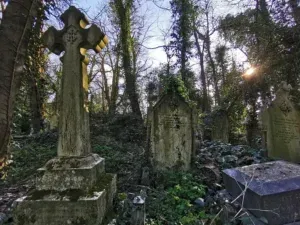 Nunhead Cemetery, opened in 1840, is one of the lesser-known cemeteries of the Magnificent 7 but no less fascinating. Located in southeast London, Nunhead offers spectacular views of the city and a wild, untamed atmosphere that makes it unique. This cemetery is known for its crumbling Victorian monuments and its Gothic-style chapel. Although less visited than the others, Nunhead is a place of great historical and natural importance, with many native trees and plants that make it a valuable habitat for wildlife.
Nunhead Cemetery, opened in 1840, is one of the lesser-known cemeteries of the Magnificent 7 but no less fascinating. Located in southeast London, Nunhead offers spectacular views of the city and a wild, untamed atmosphere that makes it unique. This cemetery is known for its crumbling Victorian monuments and its Gothic-style chapel. Although less visited than the others, Nunhead is a place of great historical and natural importance, with many native trees and plants that make it a valuable habitat for wildlife.
6. Brompton Cemetery
 Brompton Cemetery, opened in 1840, is one of the most central cemeteries of the Magnificent 7, located between Chelsea and Fulham. This cemetery is known for its grid design, reminiscent of ancient Roman necropolises, and for its monumental Grand Gallery, a long avenue flanked by graves and mausoleums. Brompton is the resting place of many historical figures, including actor John Snow and inventor Samuel Leigh Sotheby. The cemetery has a distinct, elegant, and serene atmosphere, making it a popular place for quiet walks.
Brompton Cemetery, opened in 1840, is one of the most central cemeteries of the Magnificent 7, located between Chelsea and Fulham. This cemetery is known for its grid design, reminiscent of ancient Roman necropolises, and for its monumental Grand Gallery, a long avenue flanked by graves and mausoleums. Brompton is the resting place of many historical figures, including actor John Snow and inventor Samuel Leigh Sotheby. The cemetery has a distinct, elegant, and serene atmosphere, making it a popular place for quiet walks.
7. Tower Hamlets Cemetery
 Inaugurated in 1841, Tower Hamlets Cemetery is located in the East End of London and is closely tied to the city’s working-class history. Unlike the other cemeteries of the Magnificent 7, Tower Hamlets has a more modest appearance, with less elaborate graves and a more austere atmosphere. It is the burial place of many local residents, including numerous dockworkers and victims of cholera epidemics. Today, Tower Hamlets is an important urban nature reserve, with a rich habitat for wildlife and lush vegetation that has enveloped many of the graves.
Inaugurated in 1841, Tower Hamlets Cemetery is located in the East End of London and is closely tied to the city’s working-class history. Unlike the other cemeteries of the Magnificent 7, Tower Hamlets has a more modest appearance, with less elaborate graves and a more austere atmosphere. It is the burial place of many local residents, including numerous dockworkers and victims of cholera epidemics. Today, Tower Hamlets is an important urban nature reserve, with a rich habitat for wildlife and lush vegetation that has enveloped many of the graves.
Conclusion
The Magnificent 7 are not just cemeteries but monumental tributes to London’s social history. Each of these places tells stories of life, death, art, and culture, reflecting the city’s evolution over time. Walking among the graves, mausoleums, and chapels of these cemeteries is like taking a journey through the centuries, discovering the lives of the illustrious figures who shaped the history of the British capital. Additionally, these cemeteries offer a refuge of peace and beauty amidst the urban chaos, becoming places of reflection and discovery for all who visit them. The Magnificent 7 represent an invaluable heritage for London, preserving the memory of the past and offering a tangible link to the city’s history.
 Subscribe to our YouTube channel
Subscribe to our YouTube channel
